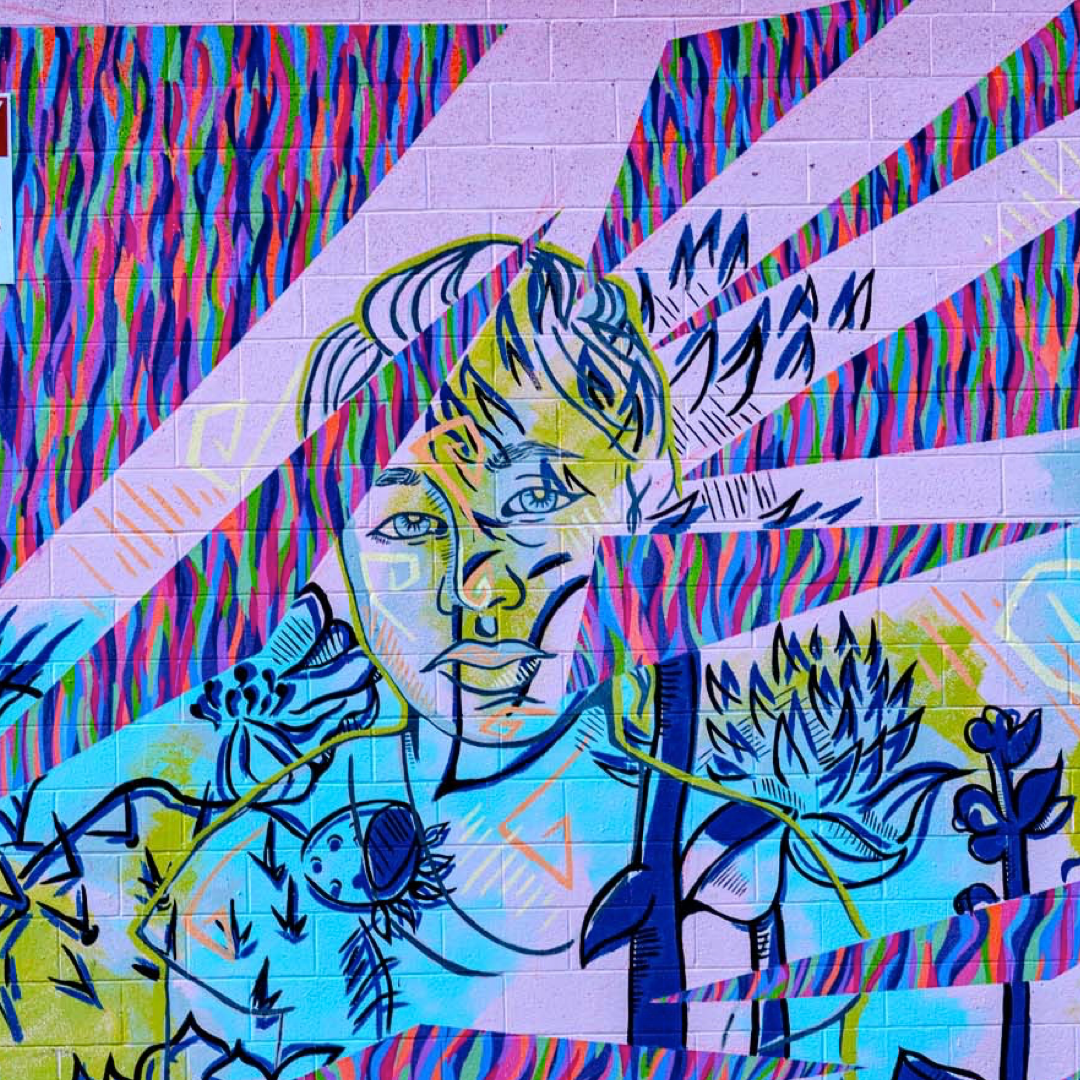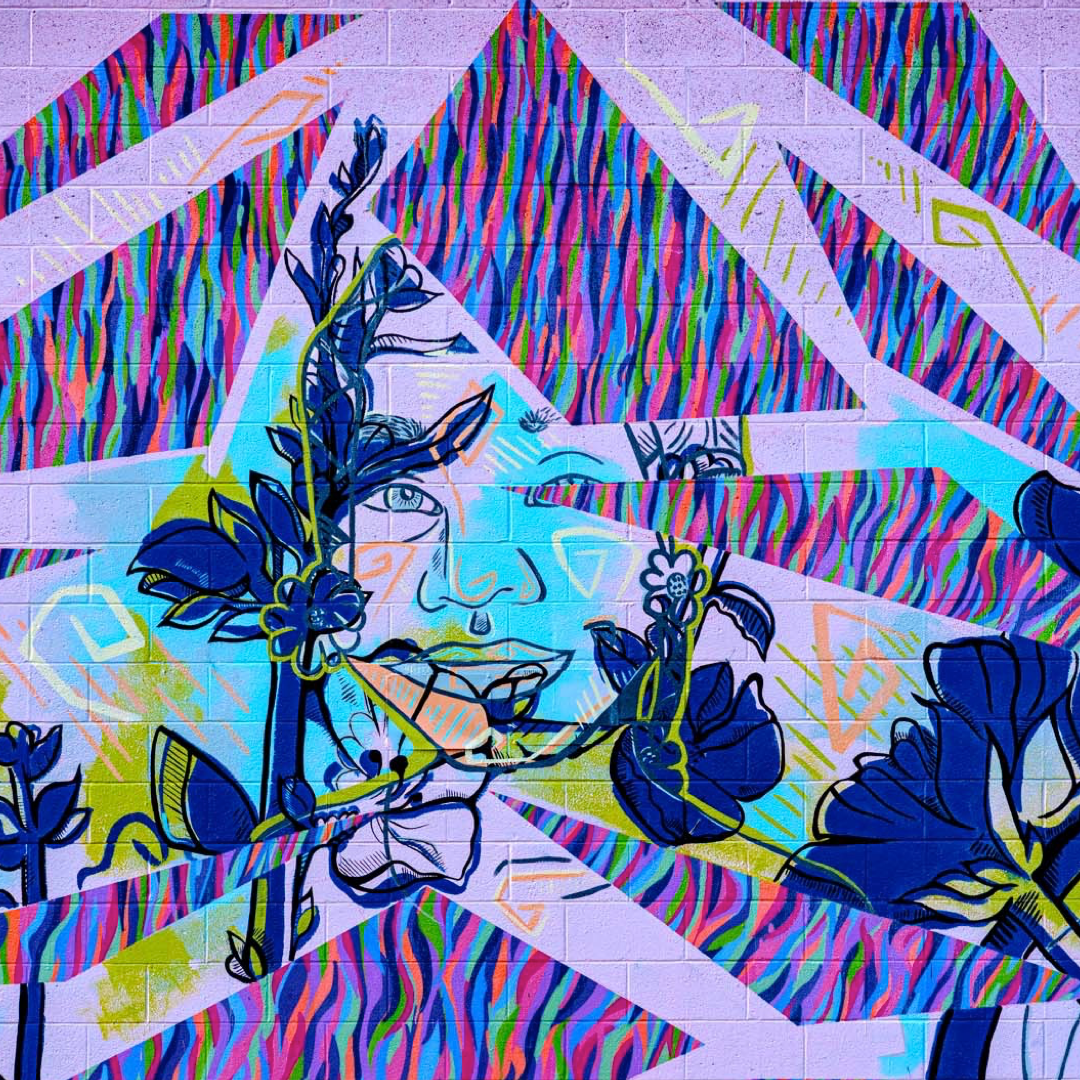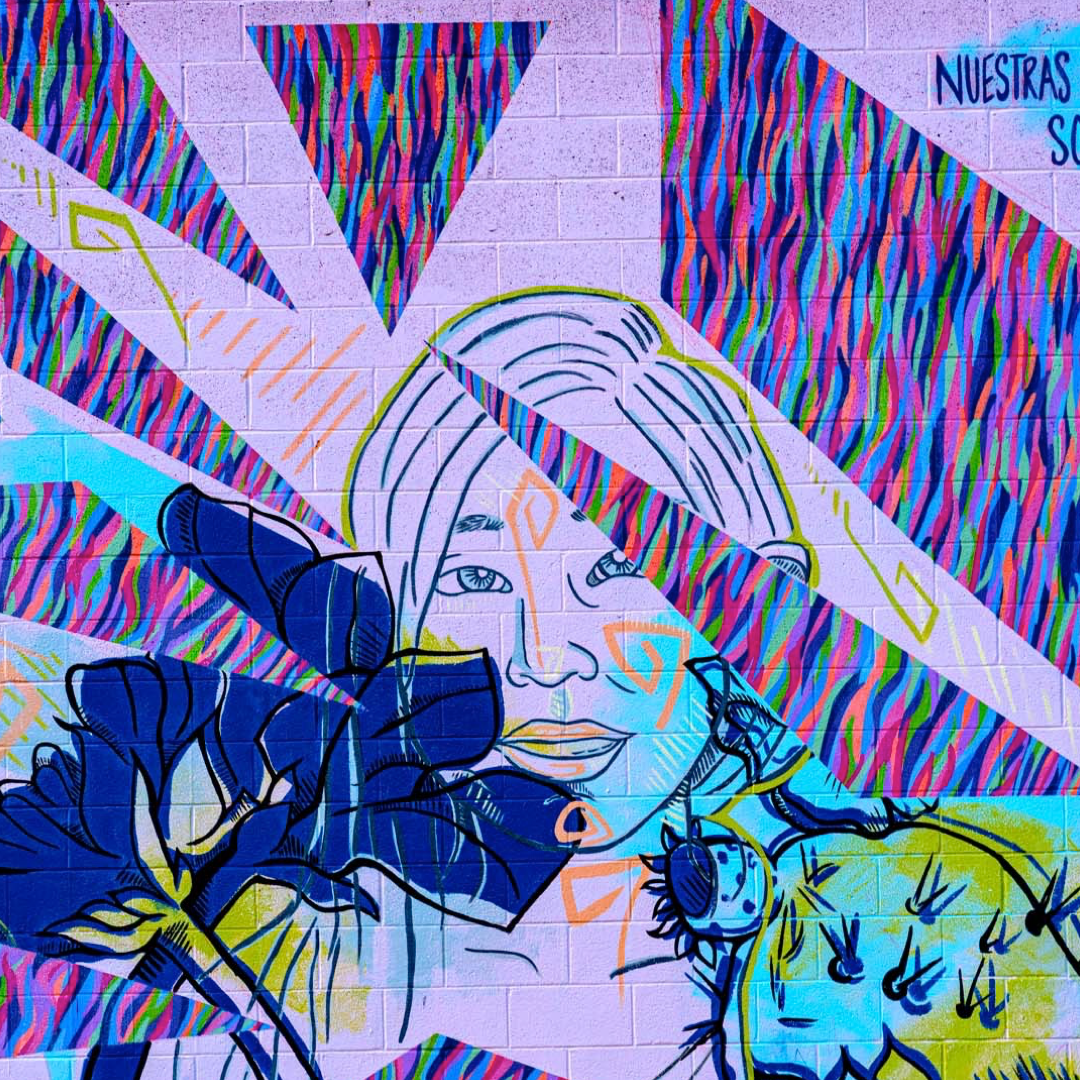Nuestras Voces Son Sus Voces
A mural by southwest artist: Helen Juliet Atkins. Featuring collaborative work with southern New Mexican muralist: Nazario Sandoval.
AUGUST 2020
Helen Juliet Atkins conceived the concept of “Nuestras Voces Son Sus Voces” during the height of the George Floyd and Breonna Taylor protests of 2020. Atkins, whose work often lies at the intersection of Art and Social Justice, commonly creates work that addresses social injustice, white supremacy and police brutality. In 2018, she created the mural “They Are Us and We Are Them” at the Albuquerque Museum for Burque Noir’s “Making Africa” event. Again, in 2019 for the Secret Gallery Exhibition “Altar”, featuring an art installation dedicated to the black women who have been killed in instances of police brutality.
Through the journey of Atkins most recent work, the case of Aiyana Stanley Jones frequently stuck out to Akins. Aiyana Mo'Nay Stanley-Jones, was a seven-year-old African-American girl from Detroit's East Side who was shot in the head and killed by police officer Joseph Weekley during a raid conducted by the Detroit Police Department's Special Response Team on May 16, 2010.
When the opportunity arose to create a mural with Secret Gallery, Atkins wanted to address this case. The mural’s design evolved over the span of two months. During this time, Atkins began to contemplate divisions amongst minority groups and the nuances of her own identity. Her experience growing up in Albuquerque, New Mexico as an Afro-Latina gave her a feeling of solidarity for the experience of all marginalized people. Thus the mural grew to address intersections of experience and systemic examples of racial violence.
Atkins included the case of Jakelin Caal Maquin, a seven-year-old Guatemalan girl who died after being taken into US Customs and Border Protection custody in 2018, and Ashlynn Mike, an eleven-year-old Navajo girl who was killed in New Mexico in 2016. Atkins views issues of police brutality, immigrant internment, incarceration and missing and murdered indigenous women as linked vestiges of white supremacy. Atkins researched New Mexican flora, and chose symbolic flowers for each case and layered these drawings over the portraits of each child. The final layer being Nazario Sandoval's work in mosaic-like fragments resembling broken glass. This foreground was chosen because Atkins wanted the portraiture of the youth as a presence to exist in the background. Similar to how these cases often linger in the background of her thoughts and recent work.
Visit the art of Helen Juliet Atkins at: https://www.helenatkins.com/











